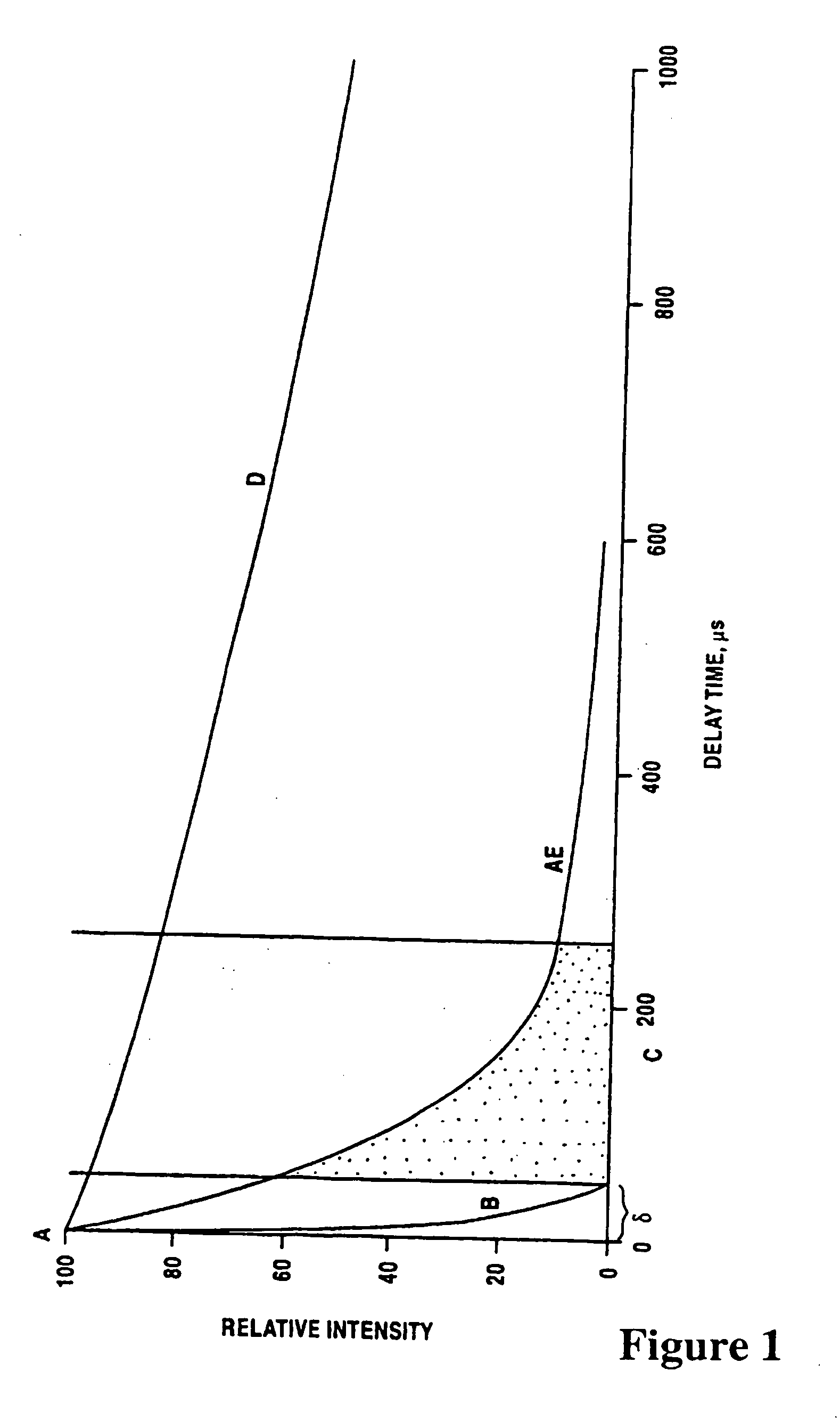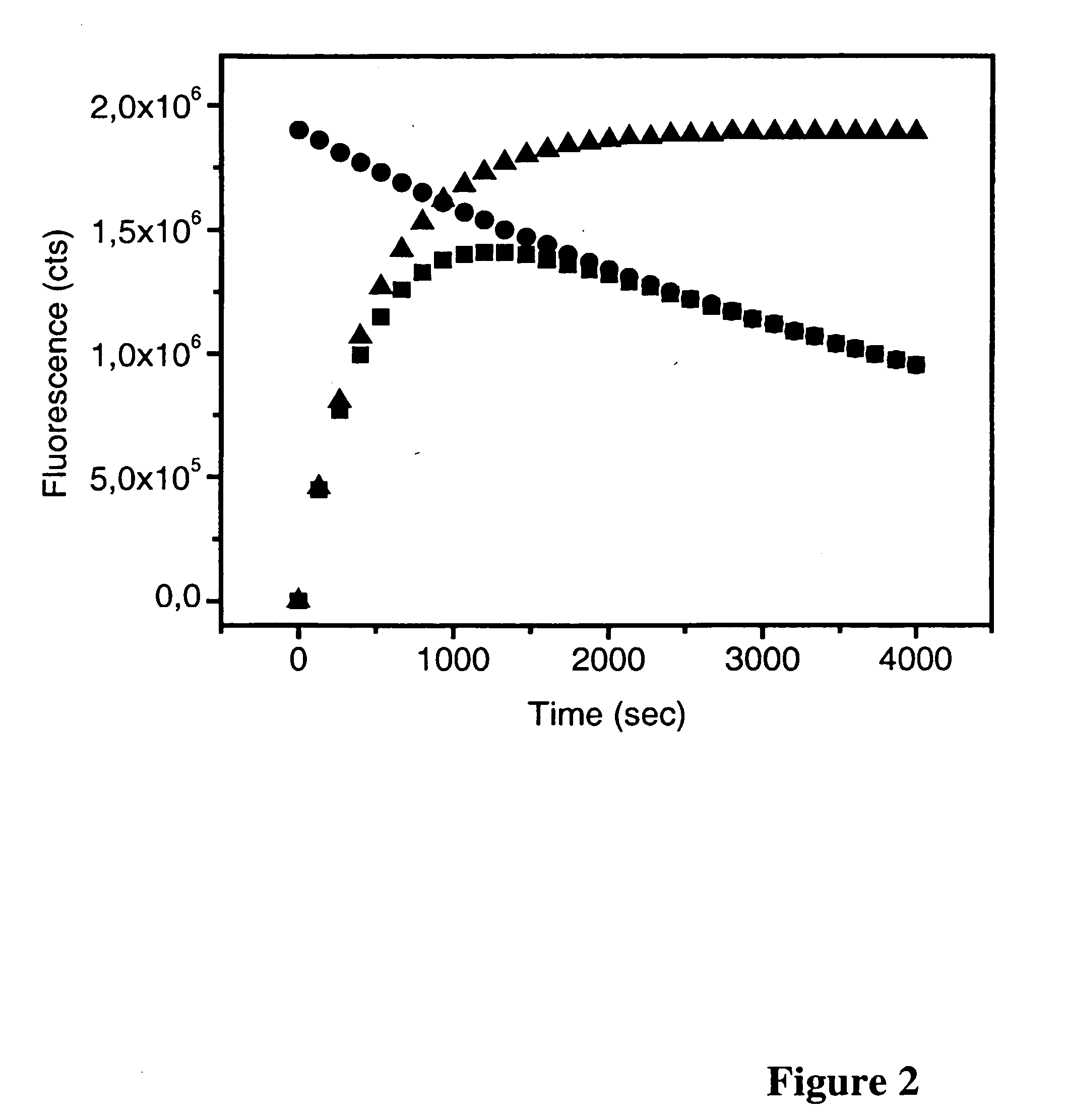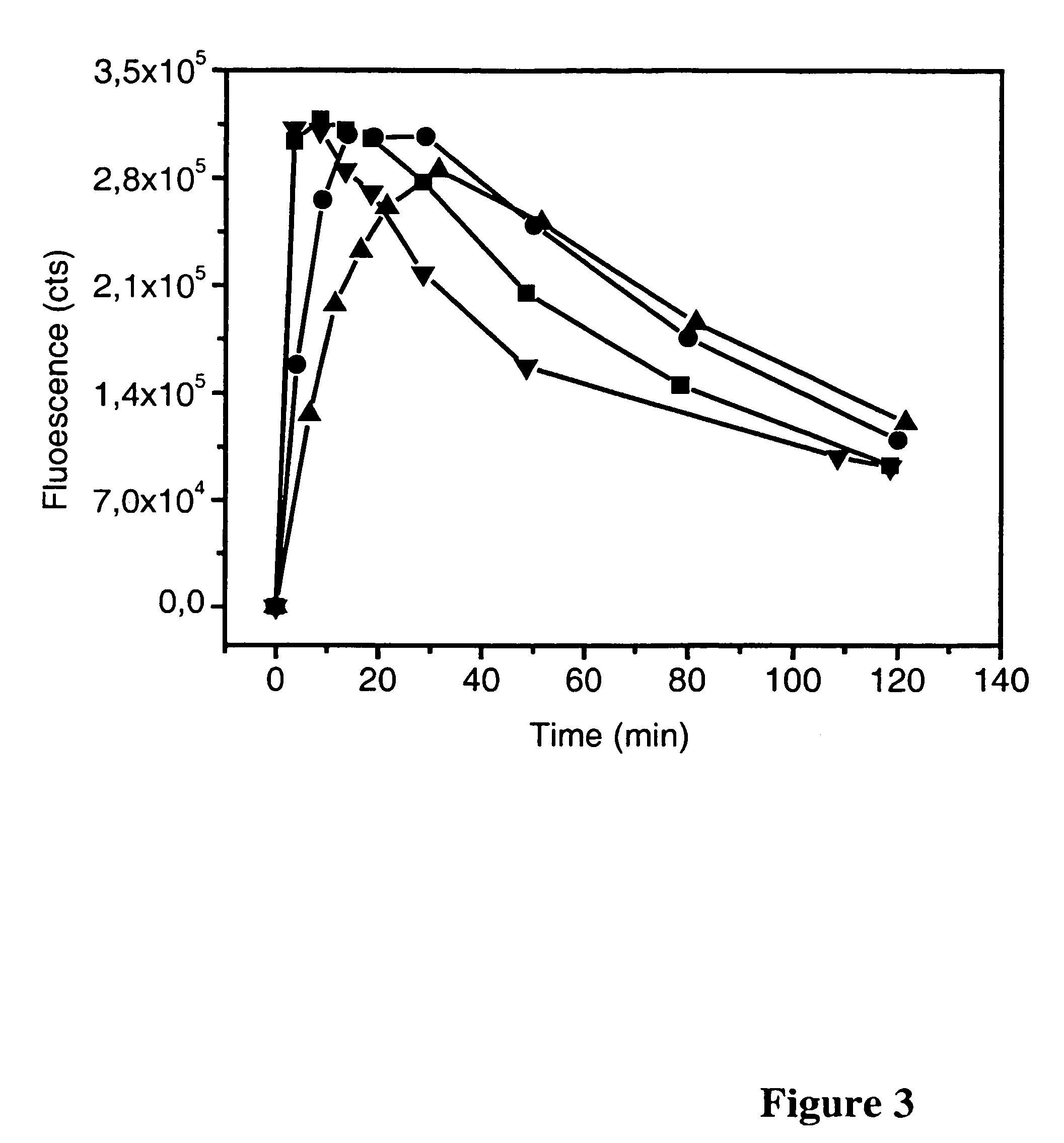Bioanalytical assay
a bioanalytical and assay technology, applied in the field of bioanalytical assays, can solve the problems of difficult control, complicated formation of complex tracing analyte, and limited improvement of sensitivity of conventional assays
- Summary
- Abstract
- Description
- Claims
- Application Information
AI Technical Summary
Benefits of technology
Problems solved by technology
Method used
Image
Examples
Embodiment Construction
[0178] Table 1 shows luminescence transitions of Eu.sup.3+. Excited state .sup.5D.sub.1 takes part in energy transfer from ligand to ion, and .sup.5D.sub.0 is the major emittive level. Direct transitions from .sup.5D.sub.1 are short-lived and much weaker. The lanthanide ions have several ground states giving rise to numerous transitions in their emission. Regardless of the fact that the emissions are sharp and well defined, there always tends to be a minor relative background emission at the wavelength acceptor being measured. An Eu.sup.3+ion has only very weak emission above 710 nm and no detectable luminescence emission above 820 nm. In the case of Tb.sup.3+ ion no luminescence emission above 700 nm exists.
[0179] Table 2 shows an example in which the increase of the number of binding sites of a nanoparticle-antibody bioconjugate increases the affinity constant as well as the association rate constant. In this example the affinity constant exceeds that of the labeled antibody when ...
PUM
| Property | Measurement | Unit |
|---|---|---|
| diameter | aaaaa | aaaaa |
| diameter | aaaaa | aaaaa |
| wavelength | aaaaa | aaaaa |
Abstract
Description
Claims
Application Information
 Login to View More
Login to View More - R&D
- Intellectual Property
- Life Sciences
- Materials
- Tech Scout
- Unparalleled Data Quality
- Higher Quality Content
- 60% Fewer Hallucinations
Browse by: Latest US Patents, China's latest patents, Technical Efficacy Thesaurus, Application Domain, Technology Topic, Popular Technical Reports.
© 2025 PatSnap. All rights reserved.Legal|Privacy policy|Modern Slavery Act Transparency Statement|Sitemap|About US| Contact US: help@patsnap.com



